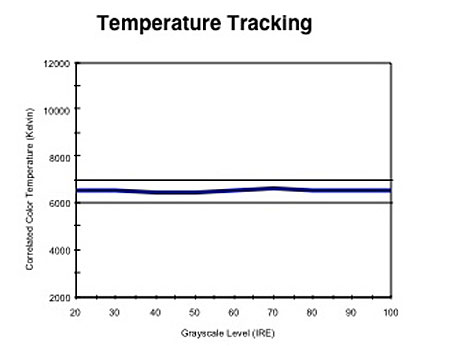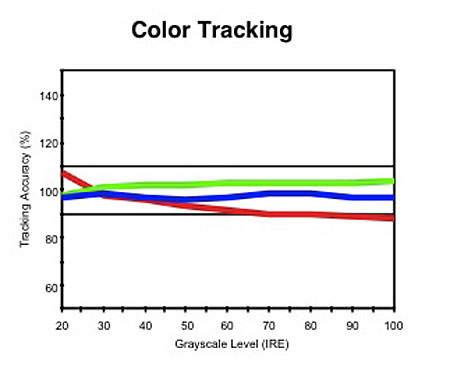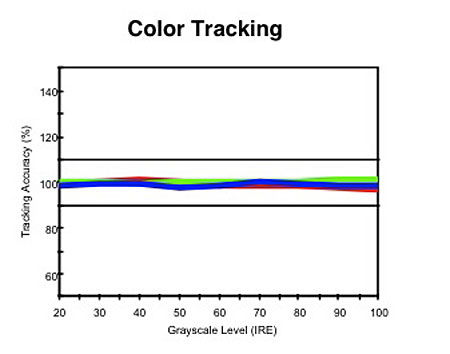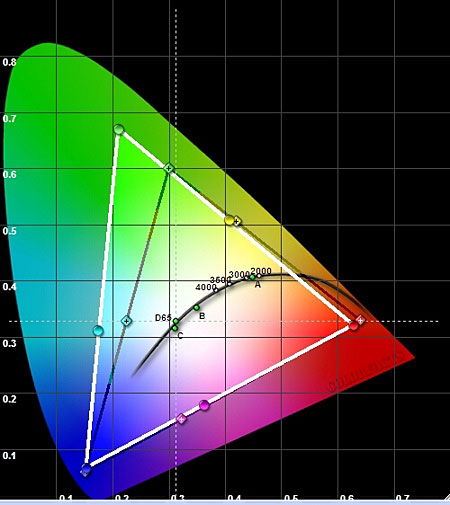Toshiba REGZA 52HL167 LCD 1080p Television Tests and Calibration
With the Aspect ratio set to Native, the Toshiba's luminance response, in both HDMI and component at 1080i, extended cleanly up to the maximum 37.5MHz multiburst frequency from my AccuPel test generator, though it was clearly rolling off by that frequency in component. Oddly, however, the maximum frequencies of the 1080i chroma burst were more visible over component than HDMI.
At 720p the set responded to the max burst frequency in both HDMI and component, but was rolled off somewhat from either input. As with 1080i, the chroma burst was less visible in HDMI than component at the maximum frequency.
As noted in the main text of the review, the 1080i resolution, in particular, was measurably reduced in any aspect ratio except Native.
Both the color and luminance held up well at 480i and 480p with both HDMI and component inputs (and the aspect ratio set to Natural—the Native option is not available at these resolutions).
In its Warm color temperature setting, the pre-calibration gray scale (measured with our Photo Research PR-650 spectroradiometer), was, as noted in the review, very close to the ideal 6500K.(Fig.1). Calibration brought this further into line (Fig.2).

Fig.1

Fig.2
Fig.3 shows how the set performed out-of-box, pre-calibration, with respect to this D6500 standard. If the red, green, and blue all overlap precisely on the 100% line across the horizontal center of this chart, the result is D6500 across the entire brightness range. The results in Fig.3 are actually not bad (falling within the lines at 90% and 110% is reasonable) but we can usually do a lot better. No set is likely to be perfect in this regard, but the post calibration results on the Toshiba (Fig.4) are excellent and come very close to the ideal.

Fig.3

Fig.4
The primary red and blue color points on the Toshiba were reasonably close to the correct values, but the CIE chart in Fig.5 shows the excessive saturation of green. (The white triangle outlines the color space of the set, as delivered.) While it may look like the extra colors would be a plus, this is not true. All colors in a video display are created from the three primaries, red, green, and blue. These are the only colors included in all consumer video source materials. When a set produces intermediate colors requiring a mix of the primaries (in other words, all colors other than the primaries themselves), it uses red, green, and blue, as defined by the set's color points, right or wrong, to create them.

Fig.5
If the set's primaries differ from the standard, all the colors produced from a combination of them will be wrong. The results will usually be watchable and sometimes even pleasant. Most of us have been living with sets having poorly defined primaries for years; in fact, many (if not most) manufacturers take liberty with these primaries based on some combination of technical, aesthetic, or commercial grounds. But they are still not accurate.
As noted in the review, however, with the right tools the set's ColorMaster feature can be used to improve this situation. Fig.6 shows the final result. The visible change was much more subtle than you might expect from comparing Figs. 5 and 6, but with the right program material you can see it.

Fig.6
I measured a peak contrast ratio of 1,525:1 using the output from a peak white window pattern (47.5 foot-Lamberts) and a full black field (0.031fL). The result was nearly identical when I used a full field white pattern (unlike plasmas, an LCD's output does not decrease as the average picture level increases). Thus, this measurement is directly comparable to the Full-On/Full-Off contrast ratio measurements provide in HT's print issues. For this set we did not perform an ANSI contrast measurement.
With the aspect ratio set to Native, there was zero overscan over either HDMI or component at 1080i or 720p.
In other aspect ratio settings the overscan averaged 2.5% at 1080i and 720p, but increased to an average of just under 4% (slightly excessive) at 480i and 480p.




























































